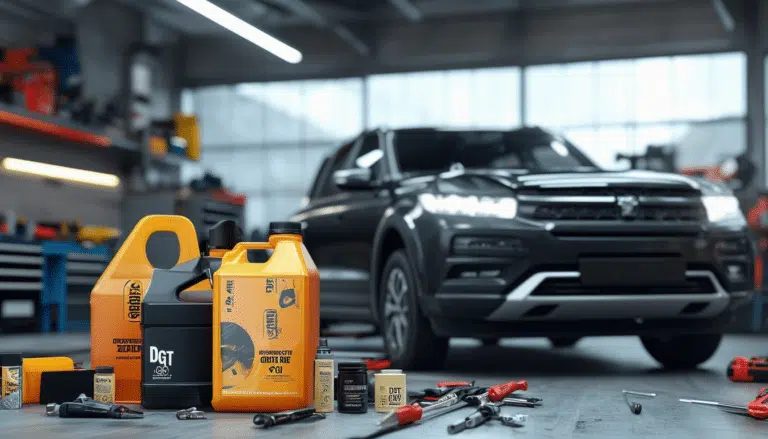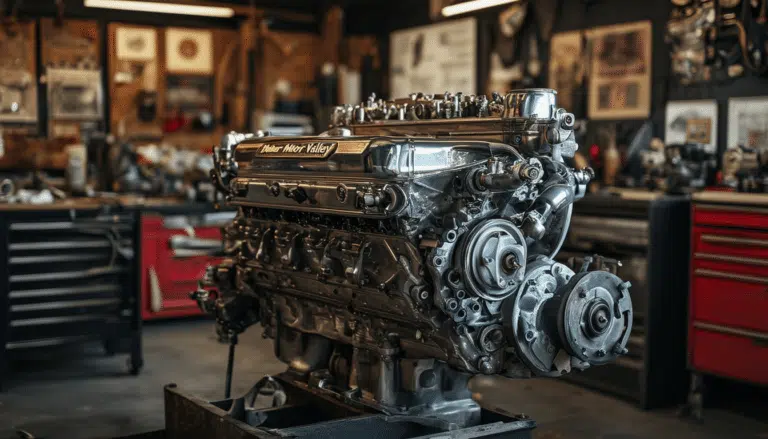Luz del motor encendida: cómo entender la situación y actuar de inmediato

The check engine light illuminated on your vehicle’s dashboard can be a source of concern for many drivers. This small warning light can indicate a variety of issues, ranging from a simple malfunction to a serious failure that requires immediate attention. Knowing how to interpret this light and the actions to take is crucial to ensuring the safety and proper functioning of your vehicle. Below, we will explore the most common causes of this situation and the steps to take to act appropriately.
When the check engine light comes on, it can be a cause for worry and confusion. This article is designed to help you understand the possible causes of this warning, how to interpret the associated error code, and what steps you should take to act quickly and effectively, thus avoiding greater complications.
Common Reasons for the Check Engine Light to Come On
Emission System Issues
One of the most common causes of the check engine light coming on is issues related to the vehicle’s emission system. This may include failures in the catalytic converter, problems with the EGR valve (exhaust gas recirculation), or failures in the oxygen sensor. Each of these components is essential for monitoring and controlling the amount of harmful gases emitted by the vehicle.
Malfunctions in the Ignition or Fuel Injection System
Problems in the ignition system or fuel injection can also trigger the check engine light. Faulty spark plugs, damaged coils, or clogged injectors are common factors that can cause this alarm.
Battery or Alternator Issues
A weak battery or an alternator that is not charging properly can result in the check engine light turning on. It is vital to ensure that the battery is in good condition and that the alternator is providing the appropriate current.
How to Interpret the Engine Error Code
Using an OBD Code Reader
When the check engine light is on, your vehicle generates an OBD error code (onboard diagnostics). To read this code, you will need an OBD reader, which can be purchased online or at specialty stores.
Interpreting OBD Error Codes
OBD codes usually consist of a letter followed by four digits. The letter indicates the system where a problem has been detected: P for the powertrain, B for the body, C for the chassis, and U for network communication.
Consulting Online Resources
There are numerous websites and mobile applications where you can enter your OBD code for a more detailed explanation; some of these tools are free while others are paid.
Consequences of Ignoring the Check Engine Light
Risk of Additional Damage to the Vehicle
The check engine light being on is an indicator that something is wrong with your vehicle. Ignoring this signal could cause further damage; for example, an issue in the emission system could damage the catalytic converter, which is costly to repair.
Potential Danger to Road Safety
Certain mechanical malfunctions can pose a risk to your safety and that of other drivers. If the check engine light indicates a problem with the brakes or steering, the risk of an accident can significantly increase.
Risk of Technical Inspection Problems
In many countries, the check engine light being on can lead to a re-inspection during the vehicle’s technical review. Therefore, you should address this issue quickly to avoid additional costs and annoying delays.
Initial Checks You Can Perform Yourself
Check the Fuel Cap
Often, a poorly secured fuel cap can trigger the check engine light. Before panicking, make sure that your fuel cap is properly closed.
Check Fluid Levels
Low levels of engine oil, coolant, or other essential fluids can activate the check engine light. Check that all these fluids are at their optimal levels.
Observe the Vehicle’s Behavior
Pay attention to how your vehicle is behaving. Does it have trouble starting? Do you notice unusual noises? These observations can guide you in identifying the underlying problem.
When to Consult a Professional
When the Check Engine Light is Flashing or Red
If the check engine light is flashing or turns red, this usually indicates an emergency. In such a case, stop driving and contact a professional immediately.
When the OBD Code Does Not Provide Clear Indications
If you cannot interpret the error code generated by your car, or if the code suggests a complex problem, it is best to consult an expert.
When Problems Persist Despite Your Checks
If after performing all recommended checks the check engine light remains on, it is time to schedule an appointment with your trusted mechanic.
How to Prevent Future Problems with the Check Engine Light
Regular Vehicle Maintenance
Having your vehicle regularly inspected by a professional can help you anticipate and prevent many issues that could trigger the check engine light.
Proper Driving Practices
Driving gently can prolong the life of your engine and prevent problems. Avoid hard accelerations and respect the engine’s warm-up times.
Using Quality Fuel
The type and quality of fuel you use can affect your engine’s performance. Make sure to use the appropriate fuel for your vehicle and prioritize reputable gas stations, such as those you can find here.
Final Tips for Managing the Check Engine Light
The check engine light being on can be an indicator of various situations, ranging from a simple maintenance reminder to a more serious mechanical issue. It is essential not to panic, but to act quickly and prudently. Each time this light illuminates, an initial check is recommended to identify any obvious failures, such as a loose fuel cap or low fluid levels.
If after these simple checks the light remains on, it is vital to consider using an OBD code reader for accurate information about the problem. These devices can help read the error code generated by the vehicle, making it easier to identify the affected area, be it the injection system, the battery, or some other critical component.
Do not underestimate the implications of ignoring the check engine light. Doing so could lead to further damage that could be costly to repair and, in some cases, compromise the safety of the driver and passengers. Serious problems in the braking or steering systems may arise, so it is advisable to take this warning seriously.
If the check engine light flashes or changes to red, it is a warning signal indicating a greater urgency and requires immediate stopping and consulting a professional. Remembering that regular maintenance and careful driving are key to preventing the check engine light from coming on in the first place will be essential in prolonging the life of the vehicle. Therefore, attention to detail and a proactive approach are your best allies for managing this situation effectively.




